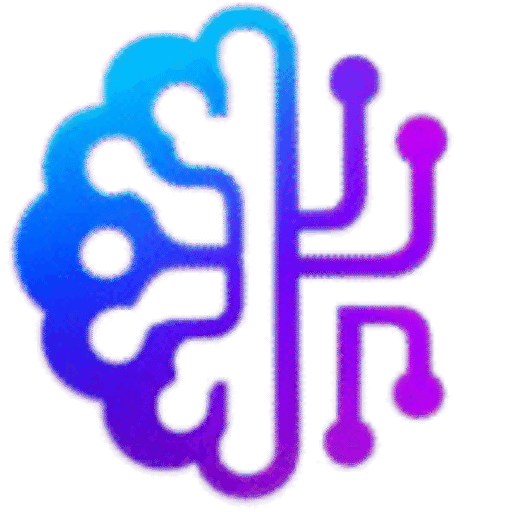Best AI Tools for Non-Profit Product Design
Introduction
Non-profits face unique challenges compared to traditional businesses. Their goals are not only about creating products or services but also about maximizing social impact, donor trust, and community engagement with limited budgets and small teams.
This is where Artificial Intelligence (AI) steps in. For non-profit organizations, AI is not just a buzzword – it can be a powerful partner in product design, helping teams design apps, platforms, websites, campaigns, and services that are more efficient, user-friendly, and impact-driven.
In this blog, we’ll explore the best AI tools for non-profit product design, practical use cases, benefits, examples, and a roadmap for implementing them.
Why Non-Profits Need AI in Product Design
Unlike corporate design, non-profit design requires balancing empathy, accessibility, and functionality.
Challenges Non-Profits Face in Product Design:
- Limited budgets and resources
- Need for accessible, inclusive design
- High demand for community-focused solutions
- Balancing donor transparency with user experience
- Creating products that tell a story and drive impact
AI can help by:
✔ Automating repetitive design work
✔ Providing data-driven insights for user needs
✔ Personalizing donor and beneficiary experiences
✔ Speeding up prototyping and testing
✔ Ensuring inclusivity and accessibility
Top Benefits of AI in Non-Profit Product Design
- Cost-Effective Creativity – Non-profits can generate high-quality designs without hiring large teams.
- Data-Informed Design – AI helps analyze user behavior, donor trends, and community needs.
- Personalization – Creating tailored communication materials for donors, volunteers, and beneficiaries.
- Faster Prototyping – AI reduces time-to-market for apps, websites, and campaigns.
- Accessibility Compliance – Ensuring digital products are inclusive for people with disabilities.
Best AI Tools for Non-Profit Product Design
Here are the top AI-powered tools that non-profits can use for better product design:
1. Canva with AI Features
- Best for: Posters, flyers, social media, donor campaign visuals
- AI Features: Magic Design, Text-to-Image generation, Brand Kit
- Why it’s great for non-profits: Easy-to-use, free non-profit plan, prebuilt templates for social campaigns
Example Use: Create donor campaign banners or social media infographics in minutes with AI-powered suggestions.
2. Figma + FigJam with AI Plugins
- Best for: App and website prototyping
- AI Features: Automated wireframing, content filling, accessibility checks
- Why it’s great: Collaborative, affordable, non-profits can design community apps with donor-friendly UI.
Example Use: A non-profit developing a health awareness app can quickly prototype user journeys using Figma AI plugins.
3. ChatGPT (OpenAI)
- Best for: Idea generation, UX writing, donor communication drafts
- Why it’s great: Non-profits can brainstorm campaigns, generate donor-friendly messaging, or create inclusive design copy.
Example Use: Writing microcopy for donation buttons like: “Your $10 can change a life today.”
4. Runway ML
- Best for: AI-powered videos and animations for storytelling
- Why it’s great: Non-profits thrive on storytelling, and AI can help create videos that emotionally connect with donors.
Example Use: Generating explainer videos of community impact projects.
5. Khroma & Coolors AI
- Best for: Color palette generation
- Why it’s great: Non-profits often need consistent branding; AI ensures emotional and impactful colors.
Example Use: Choosing colors for a mental health awareness app that invoke calmness and trust.
6. Uizard
- Best for: Converting sketches into UI designs
- Why it’s great: Non-profits with limited design teams can quickly transform hand-drawn ideas into real digital products.
Example Use: Sketching a fundraising app idea and letting AI generate its wireframe automatically.
7. Grammarly & Jasper AI
- Best for: Clear donor communication, website copy, fundraising pitches
- Why it’s great: Helps non-profits maintain clarity and professionalism in all design-related text.
Example Use: Improving donor email readability or simplifying UX copy.
8. Looka
- Best for: AI Logo and branding design
- Why it’s great: New or small non-profits can design professional-quality logos and branding instantly.
Example Use: Creating a unique identity for a new community food distribution initiative.
9. Lumen5
- Best for: Social media campaign videos
- Why it’s great: Turns blog posts or stories into engaging videos with minimal effort.
Example Use: Converting annual impact reports into a donor-friendly video presentation.
10. MidJourney / Stable Diffusion
- Best for: AI-generated campaign visuals
- Why it’s great: Non-profits can generate affordable, unique campaign images that reflect real-world impact.
Example Use: Generating AI-driven imagery of clean water projects in rural areas.
Use Cases: AI in Non-Profit Product Design
- Fundraising Campaigns – Personalized donor journeys designed using AI.
- Community Apps – Designing easy-to-use healthcare, education, or food distribution apps.
- Awareness Campaigns – Generating posters, videos, and infographics with minimal cost.
- Impact Reports – Turning data into accessible dashboards for donors and stakeholders.
- Volunteer Recruitment – AI-driven communication materials to engage volunteers.
Step-by-Step Guide: How to Implement AI in Non-Profit Design
- Identify Your Needs – Do you need visuals, branding, apps, or donor-focused campaigns?
- Pick Tools According to Goals – Canva for visuals, Figma for prototypes, Runway ML for videos.
- Start Small – Begin with one campaign or project before expanding.
- Ensure Inclusivity – Use AI to check accessibility compliance.
- Measure Impact – Use analytics tools to track engagement, donations, and conversions.
Future of AI in Non-Profit Product Design
- AI-Driven Accessibility – More focus on designs for differently-abled users.
- Ethical AI – Transparency and fairness in algorithms for social causes.
- Voice-Based Design – AI voice assistants for communities with low literacy.
- Hyper-Personalized Donor Journeys – Tailored campaigns for every donor.
Conclusion
Non-profits can achieve greater impact with fewer resources by using AI in product design. From logos to donor campaigns, apps to accessibility, AI empowers NGOs to design impactful, cost-effective, and human-centered solutions.
The best AI tools for non-profit product design ensure that organizations stay innovative while focusing on their ultimate mission: driving positive social change.





